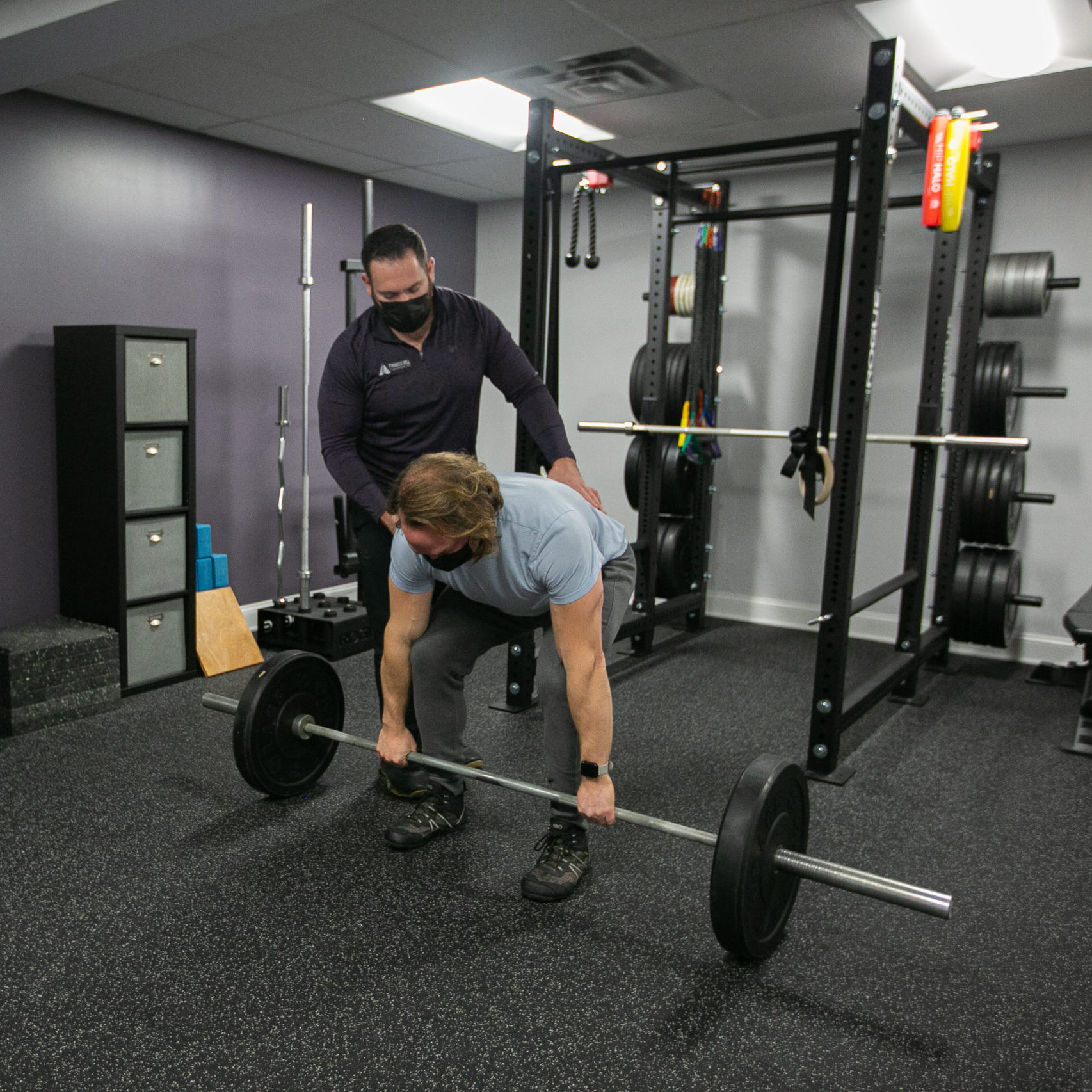Whether you’re training for a marathon, powerlifting, or just trying to avoid injury, the ability to stabilize the core is crucial. This is more than being strong, fast, or having a six-pack. Stability is the ability to coordinate muscular activity, which in the core prevents excess stress to the spine. Proper bracing improves physical activity and decreases injury risk. This isn’t just tensing your abs; proper bracing engages all of the muscles of the torso, pelvic floor, and lower back. Everyone can benefit from learning to properly balance the muscular activity in the core, particularly athletes.
Signs that you may have trouble stabilizing your core include lower back pain, tension throughout the neck and scapular area, and recurrent discomfort after training. You can do sit ups and leg raises until you’re blue in the face, but those exercises do very little to improve balanced motor control and stability. Appropriate treatment, controlled rehabilitation, and progressive exercise including stabilization training are essential to managing or avoiding injury.
Filling the canister
Quality bracing requires the development of Intra- Abdominal Pressure (IAP). IAP is the result of balanced muscular activity within the abdominal cavity created by the eccentric activity of the diaphragm, abdominal muscles, pelvic floor, and lower back. The co-contraction of those muscles creates a powerful brace around the core that helps limit unnecessary stress to the spine and create a stable midline for activity. The secret to developing IAP and proper abdominal bracing comes down to how we breath.
During proper inhalation the diaphragm drops down, which causes the abdomen to expand outward, backward, and towards the sides. The inhalation causes pressure that increases muscular activity throughout the Abdominals, Obliques, Erector Spinae, and pelvic floor. We call this 360 degree respiration and associated balanced muscular activity around the abdominal cavity “filling the canister”.
This supports and protects the spine decreasing the likelihood of injury, particularly while lifting. Stop “belly breathing”, and work on breathing down and around the torso. How much pressure we create is dependent upon the task we need to perform. Lifting something very heavy? you want a lot of pressure and stiffness. Throwing a punch? You still need to maintain a brace but want less pressure in order to maintain mobility and speed.
Application to Training
If we draw our abdomen inward and “suck in”, we create relative compression placing increased stress on spine. If we create a completely rigid brace we may help ourselves with heavy lifts but become less effective with swinging a golf club or running. Proper breathing mechanics and developing adequate IAP is the only way to create a stable and adaptable core.
Breathing is important, you could even say that it is very necessary to staying alive. Controlled breathing provides a host of benefits, but as you can see it is also vital to developing central stability. Applying this concept to your normal core routine will make it exponentially harder and more effective. With proper training, over time you can learn to develop IAP and use a proper brace for all physical activities.
Putting It All Together
Achieving optimal core stability involves more than just performing ab exercises; it’s about breathing properly to establish intra-abdominal pressure and motor control. By mastering these elements you can properly rehab after injury and progress your performance.
Learning to breathe properly can be challenging, and learning to stabilize during your routine can be even harder. If you’re looking to enhance your stability training or are working through a nagging injury; integrating chiropractic care will improve your overall physical performance. Book an appointment with me and we can work on it together.





